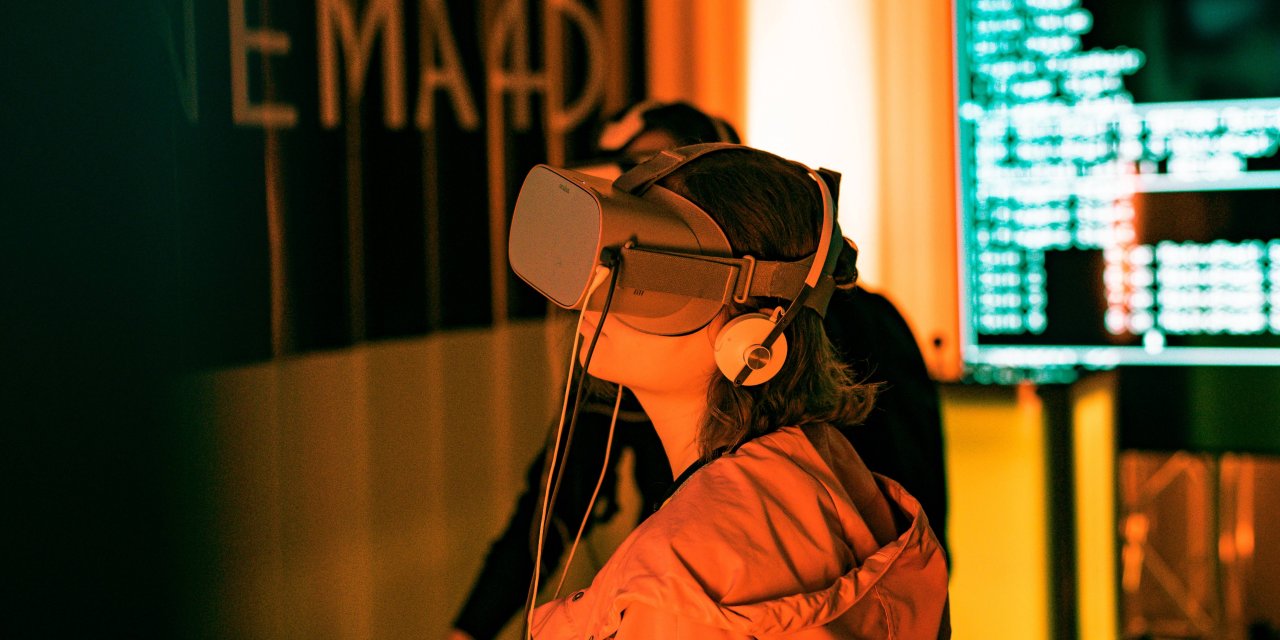The History of VR

While the term 'virtual reality' is relatively new, the desire to create immersive artificial worlds has been around for almost a century.
The History of Virtual Reality
What is VR?
The term 'virtual reality' or VR refers to an interactive and immersive digital 3D environment. Modern VR is usually achieved using headsets have screens in front of the user's eyes to create an appearance of a 3-dimensional environment. Motion trackers in the headset track the wearer's movements to reflect the turning or tilting of their head into digital space, and motion-tracked controllers are typically used to allow the user to interact with the environment. The interactivity of VR is what defines the medium from other immersive experiences like 3D or 4D movies - users must be able to interact and look around in their environment for it to meet the modern definition of VR.
The Road to VR
It took many decades of engineering and ingenuity to get where we are in 2022 in terms of VR; below are some of the major milestones that paved the way for modern VR technology.
The Link Trainer
Perhaps the first iteration of what we'd now refer to as 'virtual reality' (albeit non-digital) was a mechanical flight simulator created in 1929. Engineer Edward Link created an electromechanical replica of a pilot's cockpit known as the 'Link Trainer' complete with engine noise, turbulence simulation, and pitch and roll controls to reflect the movements of a real plane. This allowed new pilots to train to fly using only their instruments in a safe, no-risk environment before moving up to flying in a real aircraft, and an estimated 500,000 pilots from across the world used them to train throughout the course of World War II.
The Sensorama
Created in the 1950s, the 'Sensorama' was an invention similar in appearance to a typical arcade cabinet, where viewers would sit in the booth for an immersive 3D display. While not interactive, the Sensorama was designed to stimulate not just the viewer's sight and hearing but smell and touch too, with scent generators, fans, and a vibrating chair. Creator Morton Heilig created six short films for display in the Sensorama. While still not interactive like true VR, the Sensorama was one of the first digital attempts at creating a fully immersive experience.
The First (Almost) VR Headset
Also created by Morton Heilig, the first head-mounted display (HMD) was visually almost indistinguishable from modern VR headsets. Patented in 1960, the headset provided a 3D display with stereoscopic sound, but again was not interactive and just played a prerecorded short film.
The First Motion-Tracking Headset
In 1961 engineers from the Philco Corporation developed the 'Headsight', which had the modern layout of one screen per eye and used an early from of magnetic motion tracking. This motion tracking was linked to a live camera, which was then automatically moved to reflect the user's head movements to look around. While the first instance of an interactive digital experience, it only worked in connection with a live camera and could not interface with computer-generated 3D environments like modern VR headsets.
The First Artificial 3D Environment - The Sword of Damocles
Ivan Sutherland and student Bob Sproull created the first headset connected to a computer-generated 3D environment in 1968. Known as the 'Sword of Damocles' due to the massive vertical support that connected the headset to the ceiling, it was clunky and uncomfortable but successfully let the user see into a computer-generated world comprised of wireframe 3D models.
The First VR Company
Founded in 1985 by Jaron Lanier and Thomas Zimmerman, Visual Programming Lab (VPL) Research was the first company to sell VR headsets like the 'EyePhone' as well as motion-tracked gloves to allow users to interact within the 3D space. Sold as 'Datagloves' by VPL, these gloves used optical sensors to detect the movement of the user's fingers. Lainer would later popularize the term 'virtual reality' in 1987
SEGA's VR Gaming Glasses
In 1993, gaming SEGA announced plans to release a head-mounted VR system for use with the new SEGA Genesis gaming console. Although four games were developed for the headset, technical limitations prevented the device from being launched. Despite the flop, this was an important landmark in the movement of gaming companies focusing on developing for VR.
The Beginnings of Mainstream VR to Present
Palmer Lucky launched a Kickstarter crowdfunding campaign for the brand new Oculus Rift VR headset in 2012. Unlike many previous attempts at moving VR into the commercial mainstream, the Oculus was a major success and the Kickstarter campaign raised almost $2.5 million dollars. Seeing the product's potential, in 2014 Facebook bought the company from Lucky just as other VR headsets are gaining traction such as the PlayStation PSVR and the accessible smartphone-based Google Cardboard and Samsung Gear. Headsets like the Rift and HTC Vive rose in popularity, but while initially very popular due to the low cost of entry mobile-based VR headsets began to die out within a few years due to their technical constraints. In 2022, headsets like the Oculus Quest and Vive are some of the most popular, and the growth of VR doesn't appear to be slowing down anytime soon with the announcement of Meta's (previously Facebook) announcement of the VR-based internet alternative 'Metaverse'.
